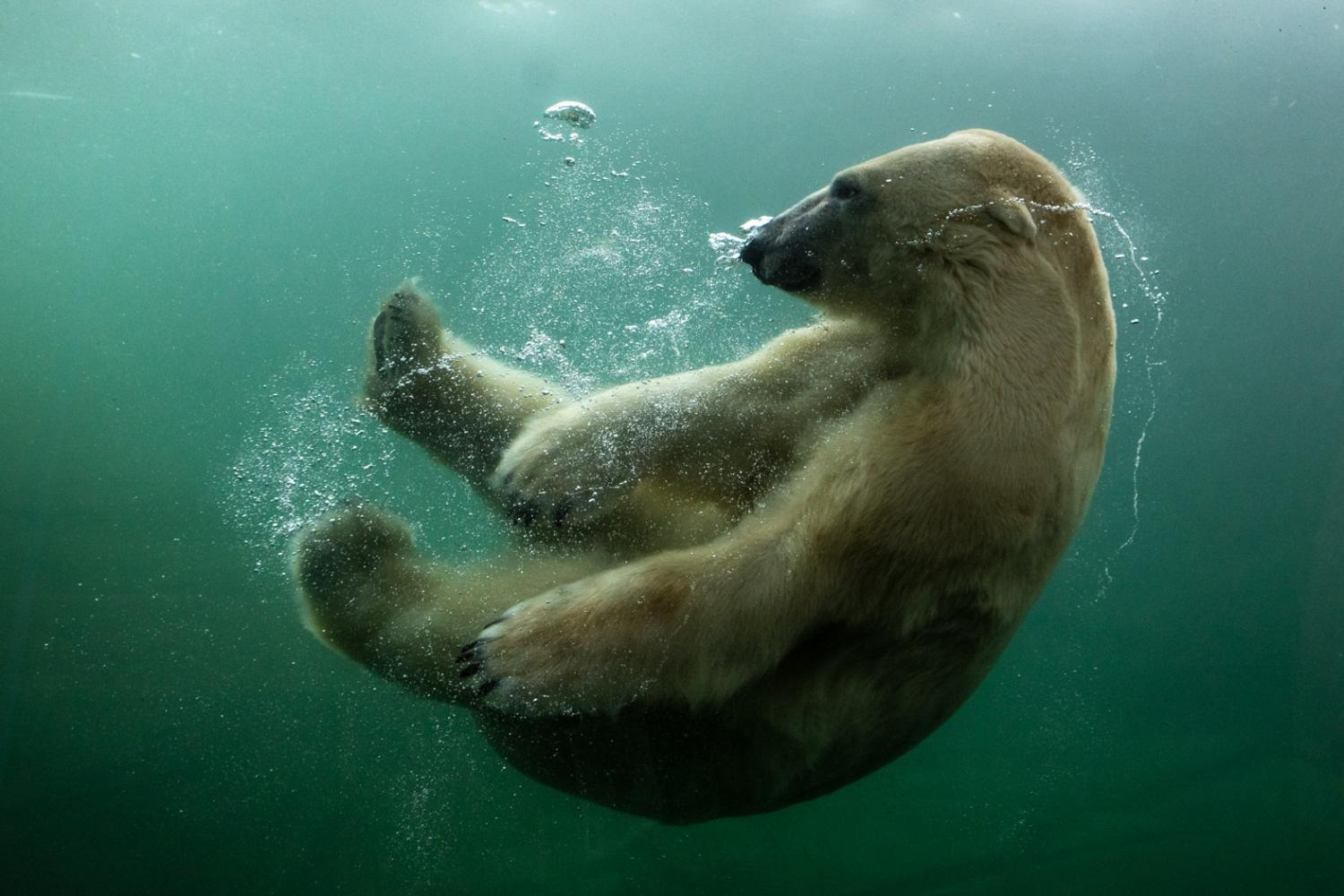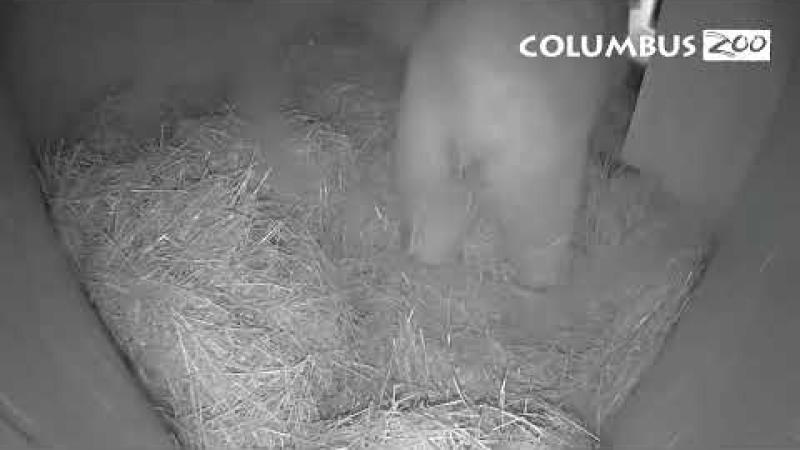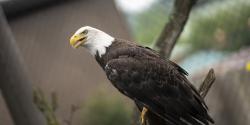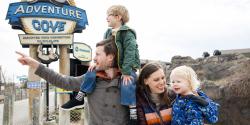This fall, guests to the Columbus Zoo and Aquarium’s Polar Frontier region may notice that Lee and Aurora, the Zoo’s resident polar bears, are separated. Why?
Because Aurora has begun the annual behavior of denning.
While we will not know for sure until November or December, the Animal Care and Conservation Medicine teams at the Columbus Zoo remains cautiously optimistic that a new cub is on the way!

In February 2023, polar bears Lee and Aurora were re-introduced in the hopes of producing cubs in the future as part of the Association of Zoos and Aquariums' (AZA) Species Survival Plan (SSP), designed to maximize genetic diversity and increase the population of threatened and endangered species in professional care.
While we anxiously await the possibility of a new cub, we want to take the opportunity to discuss some frequently asked questions regarding polar bear reproduction and denning.
What is denning?
When a polar bear in her native range is pregnant, she digs a den into a snowdrift in the fall. She’ll then climb into the den and stay there to give birth and care for her cubs for the first few months of their life. She and her cubs will not emerge from the den until the spring.
Here at the Columbus Zoo, we provide a quiet, secluded area, away from Lee and the brown bears, for Aurora to use as her den.
What is delayed implantation?
While polar bear breeding season occurs in the spring, the fertilized embryo does not implant and finish developing until late summer or early fall, with births typically occurring in November or December.
Why does Aurora den?
A female polar bear needs to feel secure in her environment in order to give birth. Therefore, polar bears in professional care are given the opportunity to den in a quiet place and care for their cub(s) just as they would in their native range.
How long do polar bears typically den?
At the Zoo, Aurora may start investigating and begin settling into her denning area as early as August. Aurora was fully separated from Lee in late September.
Polar bear cubs in zoos are typically born between early November and late December. If no cubs are born, or if they do not survive, Aurora and Lee will be re-introduced around January. If Aurora does have cubs, she will emerge from the den for short periods of time once the cubs are able to thermoregulate. She will emerge with the cub(s) around 12 weeks of age.
What does the Zoo do to assist Aurora during the denning process?
- At the Zoo, the Polar Frontier Animal Care team begins to limit the number of staff that work in the polar bear building to give Aurora a consistent team monitoring her behavior. Her Care team follows Aurora’s behavioral cues that let them know when she would like to have less interaction with her team.
- Aurora’s den area is located in a very quiet and secluded area behind the scenes, and vehicle and pedestrian traffic through the service area in and around the polar bear habitats is limited to minimize noise. North America Trek Curator, Nikki Smith, said, "Getting her comfortable in that area is the most important thing after allowing her to gain a lot of weight over the summer to prepare for nursing and caring for cubs."
- Aurora has had the same den since arriving at the Columbus Zoo, and her Care team reported that she tends to settle in well as she is very familiar with her area.
Why doesn't the Zoo do an ultrasound or pregnancy test in order to predetermine if Aurora is expecting a cub?
- There are currently no pregnancy tests for polar bears.
- Before birth, polar bear cubs are very small, making them difficult to view via ultrasound.
- This process would also interfere with Aurora’s need for seclusion while the cub(s) are developing.
Because of this, the team has to wait and be surprised by the possible addition of a new cub!

Amidst the fall atmosphere, Columbus Zoo's Polar Frontier holds its breath as Aurora embarks on her annual denning, potentially heralding the arrival of a new cub. This journey, orchestrated as part of the Species Survival Plan, reflects our shared commitment to protecting endangered species.
Learn More about the Polar Frontier Region at the Columbus Zoo










